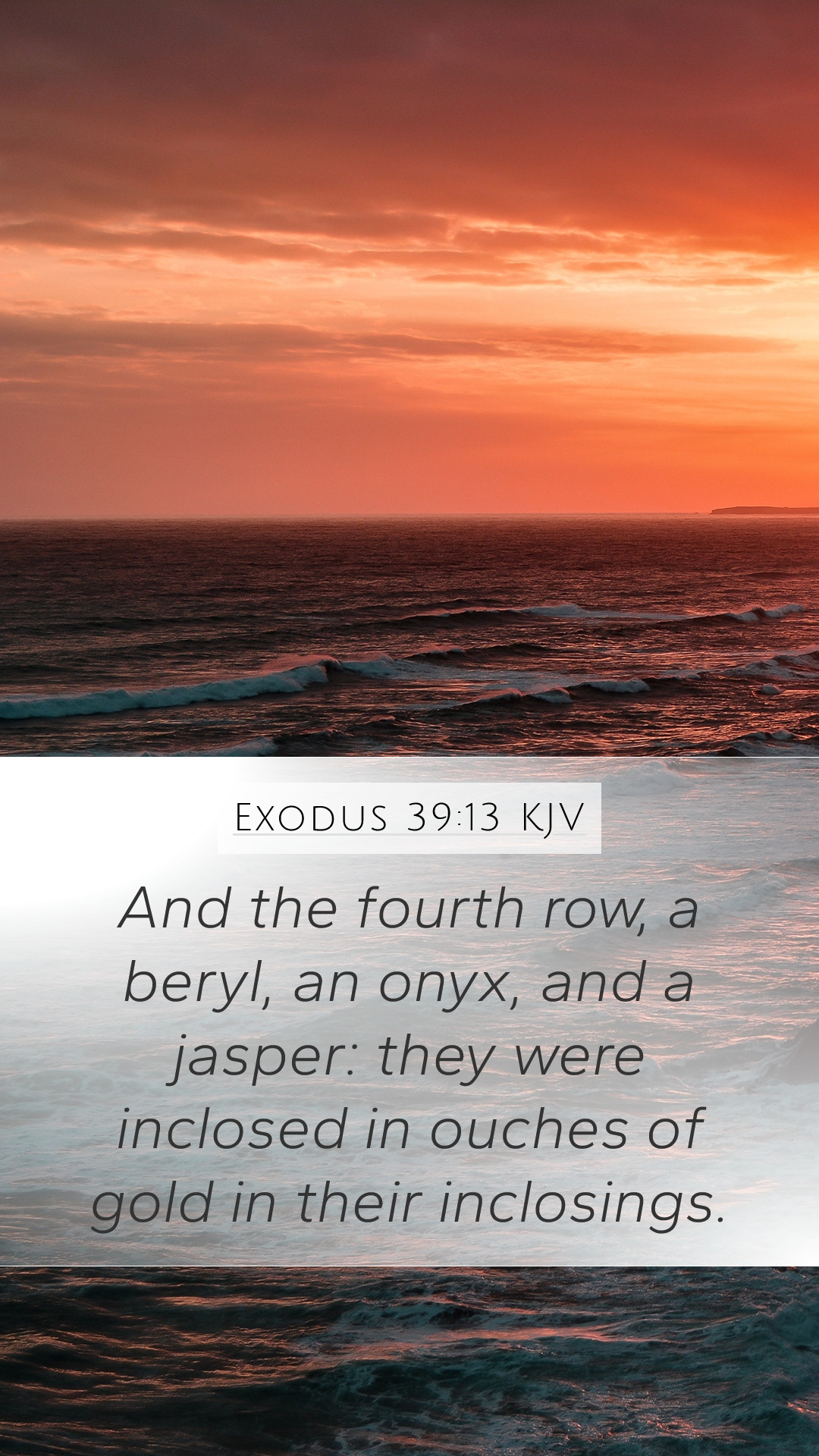Understanding Exodus 39:13
Exodus 39:13 states, “And they put the fourth row, a beryl, and an onyx, and a jasper: they were enclosed in gold in their enclosings.” This verse is a part of the detailed description of the High Priest's garments, specifically the breastplate which held twelve stones, each representing one of the tribes of Israel.
Meaning of Exodus 39:13
This verse conveys significant theological and symbolic meanings. From a Bible verse commentary perspective, the inclusion of such precious stones signifies the value and importance of the people of Israel in God's sight. Let's explore the insights gathered from renowned public domain commentaries.
Insights from Matthew Henry
Matthew Henry emphasizes that the stones represent the twelve tribes of Israel. Each stone's name engraved upon it highlights the personal relationship God has with His people. Henry points out the beauty of the arrangement and how it reflects not only the splendor of God’s design but also the access the High Priest had to God on behalf of the people.
Insights from Albert Barnes
Albert Barnes further expounds on the significance of the stones' colors and their respective meanings. He suggests that these gems symbolize various attributes of God and the diverse qualities found within the tribes. Barnes also notes that the gold surrounding the stones signifies purity and divinity, encapsulating God's holiness which is essential in worship.
Insights from Adam Clarke
Adam Clarke focuses on the craftsmanship involved in creating the breastplate. He highlights the meticulous detail and effort that went into the construction, implying that worship requires as much dedication and attention to detail. Clarke proposes that the arrangement of the stones can also be seen as a form of representation for believers standing before God, symbolizing their worthiness through His grace.
Theological Significance
- Representation of Israel: The twelve stones symbolize the twelve tribes of Israel, each receiving individual recognition and representation before God.
- Access to God: The breastplate serves as a reminder of the High Priest's role as mediator between God and His people.
- Symbolism of Colors: The diverse colors of the stones may reflect God's multifaceted nature and the different characteristics of His people.
- Purity of Worship: The use of gold signifies the importance of purity and holiness in worshiping God.
Application in Daily Life
Understanding Exodus 39:13 offers valuable lessons for how we approach God and acknowledge our relationship with Him. In our daily lives, we can:
- Value Individuality: Just as each tribe had its unique stone, we should recognize and celebrate our individuality within the community of believers.
- Strive for Purity: The emphasis on gold should inspire us to pursue holiness and purity in our actions and thoughts.
- Engage in Worship: Recognizing the effort put into the High Priest's garments prompts us to approach God with the seriousness and dedication He deserves.
Related Bible References
- Revelation 21:19-20: Describes the foundation of the New Jerusalem, which has precious stones much like those in the breastplate.
- Exodus 28:15-30: Detailed account of the High Priest's garments, emphasizing their significance and purpose.
- Isaiah 49:16: God’s promises how He engraves us on the palms of His hands, similar to how the stones were engraved.
Conclusion
Exodus 39:13 not only serves as a historical account but also holds deep significance as part of the broader narrative of Israel's relationship with God. The insights derived from various Bible study guides and Bible study resources allow for a richer understanding Scripture and facilitate deeper bible study insights.


